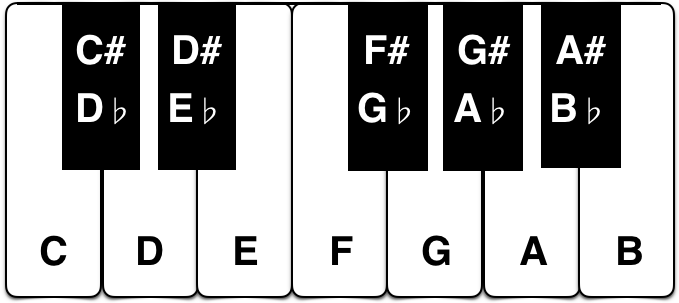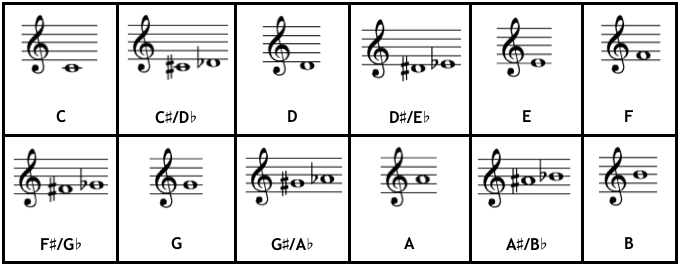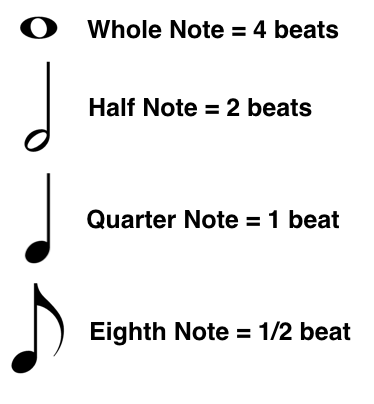Introduction
Before we can start playing and improvising Jazz, we need to know some basic music theory. In the next few lessons, we will start with the basic building blocks of music and develop from there to cover some elementary musical concepts. In this way I hope to show how music (in general) works and is constructed.
Notes
A note is the smallest element of music. It is a pitched sound. In Western Music, there are 12 notes in an octave – labelled A through G (with sharps and flats). Each key on the piano denotes a single note (see below). Different note names which represent the same note (for example C# and D♭) are called enharmonic.


And the duration of each note is denoted by it’s note value.

Music Theory
It is very important to remember that there exist only 12 notes. Every single chord or scale or mode or motif or melody is made up of some combination of these 12 notes. All the various musical concepts I will be covering in future lessons are just abstractions away from these 12 notes. Whenever you’re learning a new concept (like a scale or chord), always remember to break it down into the individual notes of which it is comprised.
In the next lesson we will take these 12 notes and build a scale from them.